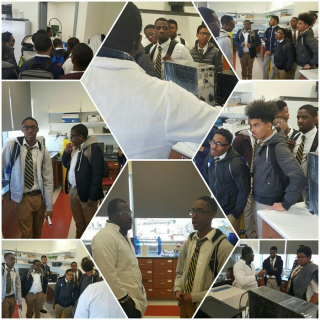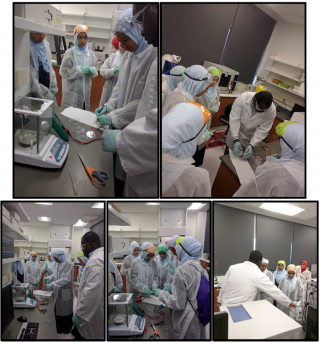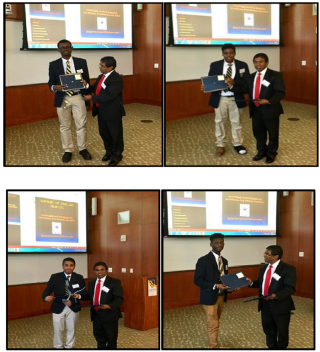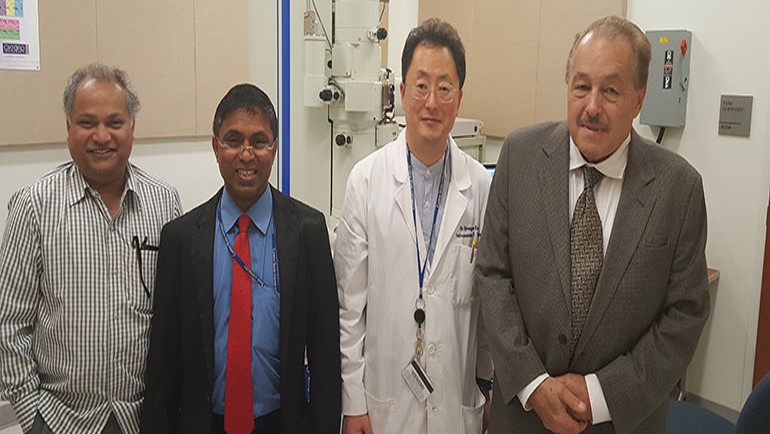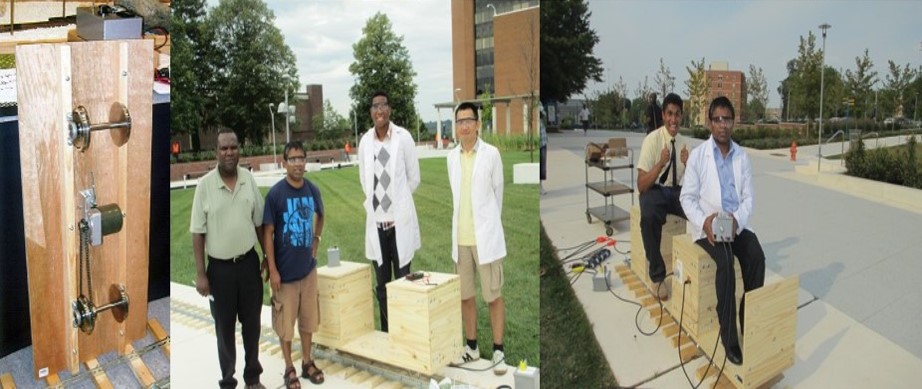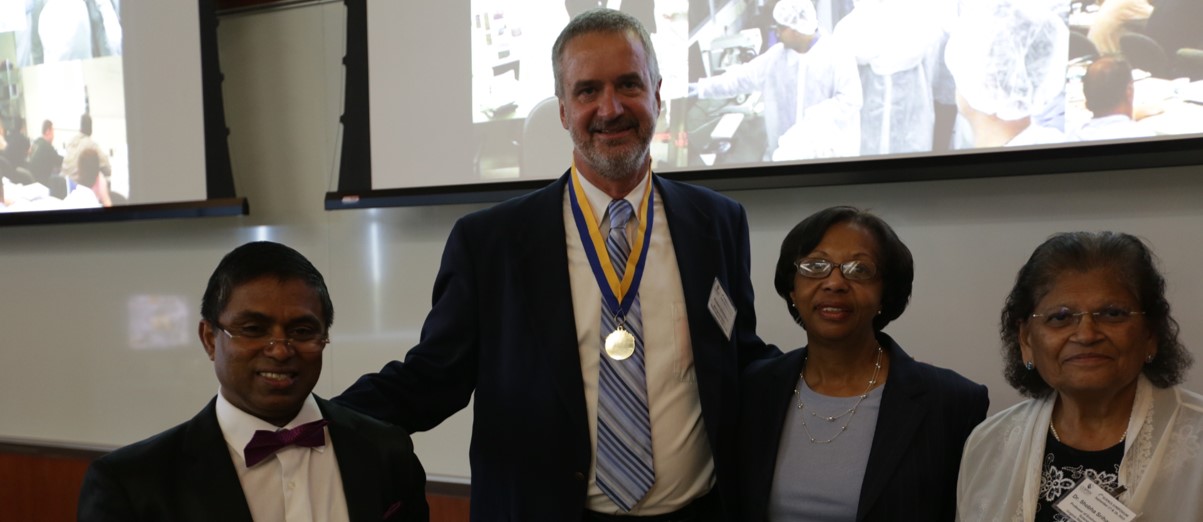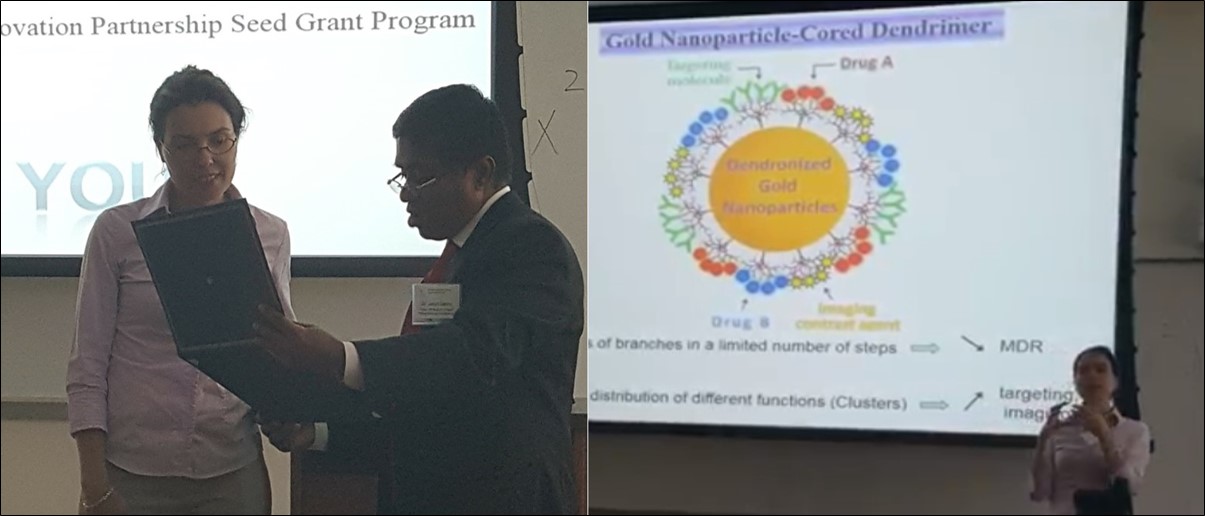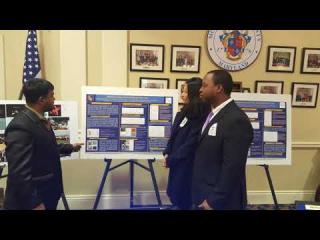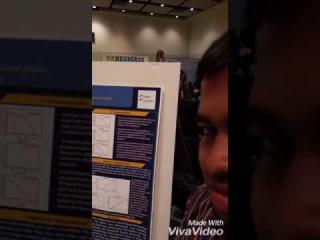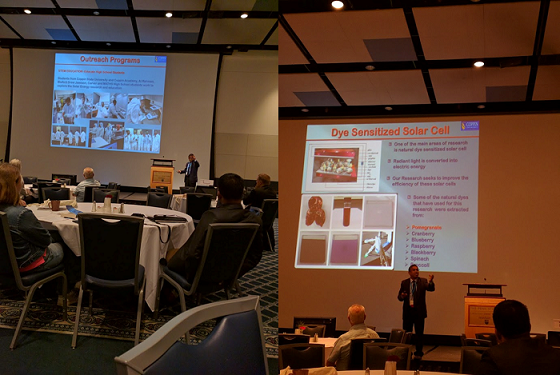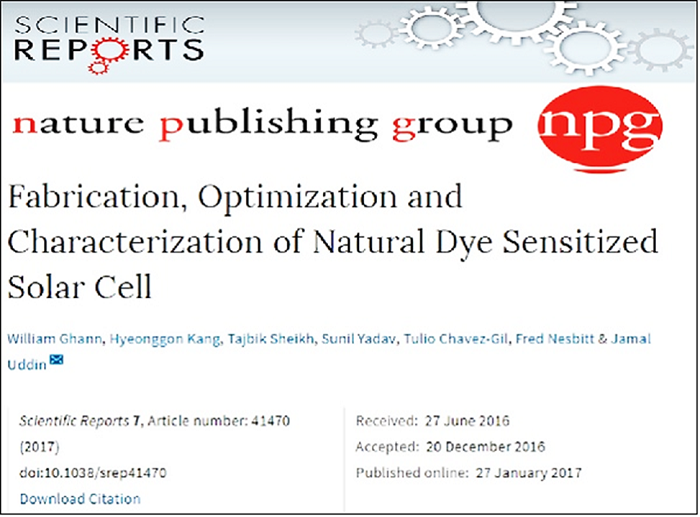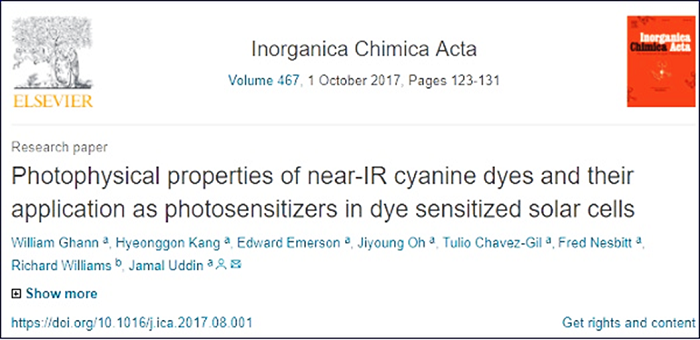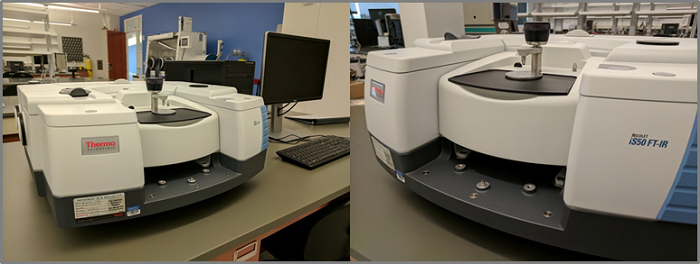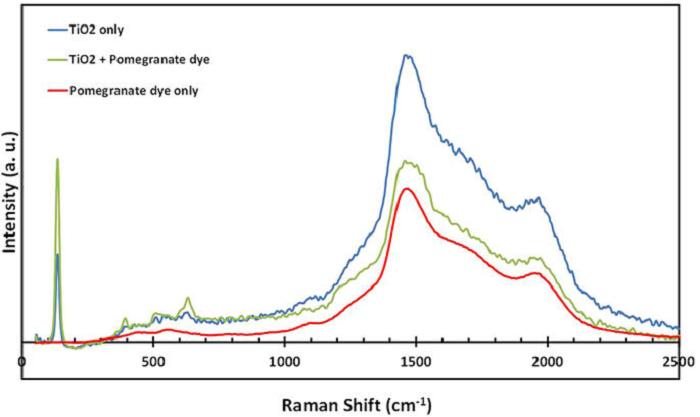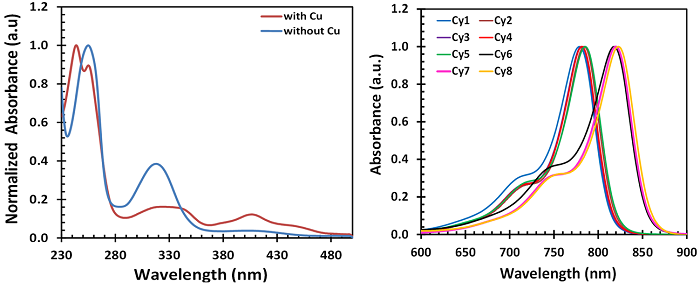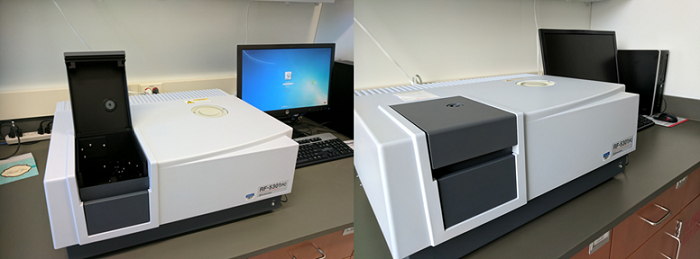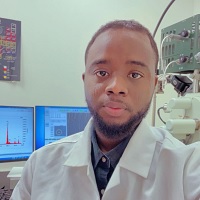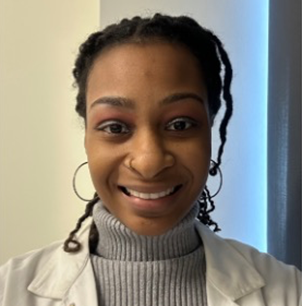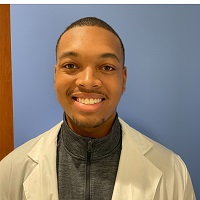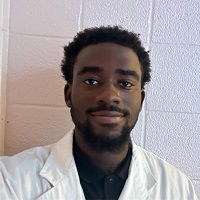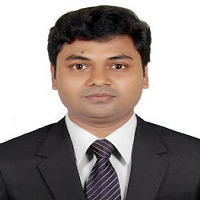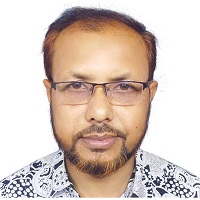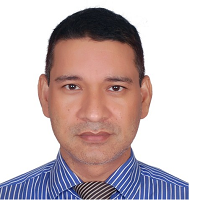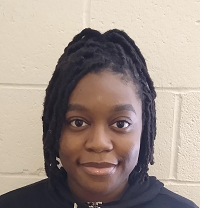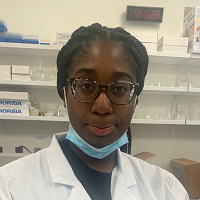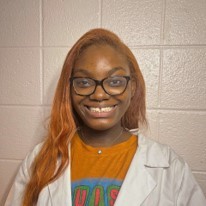The Center for Nanotechnology brings together faculty members and students from the College of Arts and Sciences for collaborative research. The center also hosts a number of high school students during the summer and winter sessions and welcomes a number of researchers from other institutions which fosters the exchange of scientific ideas and promotes interdisciplinary research. Currently, the center’s day to day operations of research tasks and management of interns is overseen by a research faculty member.
Abdullahi Adams
Abdullahi Adams is currently a Graduate student pursuing a Master degree in Polymer and Material Science at Coppin State University. He is fascinated with the world of materials and polymers particularly the sustainable aspects of polymer and material science by seeking eco-friendly solutions to global challenges. His overall goal is to explore the boundaries of what is possible with innovative materials and polymer science. Abdullahi is conducting research at the Nanotechnology Center under the guidance of our professional scientists at Coppin State. Outside of the center of nanotechnology, Abdullahi hobbies include reading, hiking and watching movies on his free time.
Sade Ali
Sade Ali is currently a graduate student at Coppin State University. She majored in Psychology and minored in Biology at the University of Maryland Global Campus. She hopes to continue her education in Applied Molecular Biology and Biochemistry to contribute research in the biological disciplines of Psychology. She is learning laboratory techniques from Dr. Ghann and Dr. Uddin both in the Center for Nanotechnology and in General Chemistry lab. Her hobbies include uploading videos on TikTok, learning Spanish and karaoke.
Khalil Oliver
Khalil Oliver is a senior at Coppin State University. He is in school to become a microbiologist. He is currently a biology major, and after earning his bachelor's degree he plans on coming back to Coppin for two more years to earn a master's in molecular biology. His goal in life is to become a microbiologist and work in a bio safety level 4 lab for the CDC. Another goal of his is to become a mentor to young kids who need a father figure in their lives. His hobbies are playing videogames and making funny videos.
Tremaine Holmes
Tremaine Holmes is currently a Senior at the prestigious Coppin State University. He’s a biology major, minoring in chemistry and pre-med concentration. Tremaine Holmes intends to enter attend dental school upon graduation. He hopes to help people feel more confident and increase one’s overall oral health. Currently, Tremaine is working with the Coppin Center of Nanotechnology to learn more about research techniques. Outside of research, Tremaine is a proud member of Phi Beta Sigma Fraternity Inc. He also works for his family and spends a lot of time volunteering, traveling, and spending time with his loved ones.
Oreoluwa Jaiyesimi
Oreoluwa Jaiyesimi is a current sophomore in the class of 2026 at Coppin State University. He is a chemistry major and plans to complete a master’s program in chemical engineering after graduation. His overall goal is to work as a chemical engineer for a pharmaceutical company like Pfizer or Moderna, engineering the vaccines and groundbreaking medicinal drugs of tomorrow. Currently, Oreoluwa is learning different research techniques such as characterization of nanoparticles under the guidance of professional researchers at Coppin State University. Outside of our center, Oreoluwa spends his leisurely time reading historical texts and philosophical works.
Ajoy Kumer
Ajoy Kumer, a native of Bangladesh boasts of an impressive academic background. He earned a B.Sc. (Honors) in 2014 in Chemistry, an M.S. in research on Organic Chemistry in 2016 from the University of Chittagong and obtained an MPhil in Organic Chemistry from the Bangladesh University of Engineering and Technology (BUET) in 2019. His research interests are in various fields of computational Science, including computational chemistry, computer-aided drug design, computational biology, bioinformatics, computational materials science, organic synthetic chemistry, medicinal chemistry, and computational simulation of NanoCrystals and Quantum Dots. During his tenure at his previous and current working station, he established the Laboratory of Computational Research for Drug Design and Material Science, equipped with over 17 simulation software. In his leisure time, Ajoy indulges in hobbies such as train travel accompanied by reading books or novels. He also enjoys fishing and visiting agricultural crops in the countryside. Overall, his outstanding achievements and multifaceted contributions reflect his dedication and passion in both academic and societal endeavors. Ajoy Kumer is currently a visiting scientist at the Center for Nanotechnology, Coppin State University.
Dr. Mohammad Muslem Uddin
Dr. Mohammad Muslem Uddin is a Professor (Former & 1st Regular Chairman) of the Department of Oceanography at the University of Chittagong, Bangladesh. He joined the Institute of Marine Sciences and Fisheries as a lecturer in 2005 and was subsequently promoted to Assistant Professor and Associate professor in 2007 and 2016 respectively. In 2019 he joined the Department of Oceanography of the same University and served as the first regular Chairman of the department from July 2020 to July 2023. He was promoted to Professor on 31st January 2023. Along with teaching and research at the university, he has been leading and involved with several professionals and voluntary organizations working for society, the environment, and education development. The teaching and research fields of Dr. Uddin include Ocean Literacy, Coastal Oceanography and Geomorphology, Marine Ecology and Hydrography, Meteorology and Climate Science, etc. He is a proud member of Nippon Foundation (NF)- General Bathymetric Charts of the Ocean (GEBCO).
Dr. Faisal Islam Chowdhury
Dr. Faisal Islam Chowdhury earned his B.Sc. (Honours) and M.Sc. in Chemistry, followed by two Ph.D. degrees: a Ph.D. in Chemistry from the University of Chittagong (2010) for his pioneering work on molecular interactions in binary liquid mixtures, and a Ph.D. in Experimental Physics from the University of Malaya (2018) for his research on ionic liquid-doped gel polymer electrolytes applied to dye-sensitized solar cells. With over 20 years of experience in teaching and research, Dr. Chowdhury is currently a Professor of Chemistry at the University of Chittagong. In 2019, he worked as a Visiting Research Fellow at the Center for Ionics, Department of Physics, University of Malaya, Malaysia. In 2022, Dr. Chowdhury completed the CW-LSE on LQM course at VERIFIN, Helsinki University, Finland. He also served as the Chair of the 1st International Symposium on Materials, Energy & Environment (ISMEE 2024), held on March 2-3, 2024, at the Department of Chemistry, University of Chittagong, Bangladesh. Additionally, he is currently a guest editor for the special issue “VSI: Energy & Environmental Sustainability” of the Chemical Physics Impact journal (Elsevier). Dr. Chowdhury has received numerous awards, including the Best Presenter Award at ISMAI 2016 in Kuala Lumpur, Malaysia, and the Research Excellence Award in 2023 for High Impact Factor Journal Publications at the University of Chittagong's Research Festival. He established the Nanotechnology, Renewable Energy, and Catalysis Laboratory (NRCL) and the American Chemical Society (ACS) Student Chapter at the University of Chittagong, where he serves as Principal Investigator and Faculty Advisor, respectively. Furthermore, Dr. Chowdhury is the founding Chair of the American Chemical Society Bangladesh Section. Currently, he is working to establish the Nanotechnology & Renewable Energy Research Laboratory (project director) and the Chittagong University Nano Center. His expertise spans a wide range of fields, including dye-sensitized solar cells (DSSC), nanotechnology, Li-ion batteries, polymer electrolytes, computational chemistry, environmental chemistry, and solution chemistry. Dr. Chowdhury has successfully led numerous national and international research projects funded by institutions such as the University of Malaya, University of Chittagong, University Grants Commission (UGC) of Bangladesh, the Ministry of Science and Technology, Bangladesh, and the American Chemical Society, USA. He has published 60 articles in Scopus/SCI-indexed journals, authored 17 book chapters, and is currently working as an editor on a forthcoming book “Advances in Graphene Chemistry: Recent Development, Future Opportunities and Sustainable Application”.
Md. Atikur Rahman
Md. Atikur Rahman has recently completed his Bachelor of Science (B.Sc.) degree in Electrical and Electronic Engineering (EEE) at the University of Chittagong, Bangladesh. His research interests encompass nanotechnology, with a specific focus on nanomaterial fabrication and characterization for future nanotech devices. Notably, he is an active member of the Nanotechnology Center at Coppin State University and has authored 1 book chapter and 10 scientific publications.
Jahidul Islam
He is just finished his B.Sc. in Chemistry (2021) from University of Chittagong, Chittagong-4330, Bangladesh. His research interest includes the dye-sensitized solar cell and energy storage devices. He is a member of the Nanotechnology Center at Coppin State University and his research interest is in the characterization of materials for solar cell and battery research. He published 7 scientific articles and 2 book Chapters.n order to fabricate simple, cost-effective, environmentally friendly and highly efficient.
Monique Hines
Monique Hines is currently a junior at Coppin State University. She is a double major in Chemistry and Biology, with concentrations in biochemistry and pre-medical, respectively. She plans to attend a research university after graduation to obtain her M.D. and Ph.D. She is a member of the Nanotechnology Center at Coppin State University and her research interest is in the application of gold nanoparticles in research involving women’s health.
Chika Iwuji
Chika Iwuji is currently a sophomore at Coppin State University. She is a biology major who plans to use her degree to attend medical school upon graduation. She aims to specialize in surgery and women's health. Currently, she is conducting research at the Nanotechnology Center under the guidance of our professional scientists at Coppin State. She is a member of the Honors College and enjoys watching movies in her free time.
Colombe Nguatta
Colombe Nguatta is currently a sophomore at Coppin State University. She is majoring in biology and hopes to use her degree to attend pharmacy school after graduation. Her overall goal is to own her own pharmacy overseas while she works as a pharmacist in Maryland. Currently, Colombe is learning research techniques from the professors at Coppin Center for Nanotechnology. Outside of the center of nanotechnology, she is also a member of the Honors College. Colombe’s hobbies include reading, writing, and spending time with loved ones.
Imani Blackman-Murray
Imani Blackman-Murray is currently a junior at Coppin State University. She is a biology major with a pre-concentration in Pre-Pharmacy. Imani plans on using her degree to attend Pharmacy school and become a full-time Nuclear Pharmacist. Presently, Imani is learning research techniques under the guidance of our professional scientists at Coppin State University. Outside of the Center of Nanotechnology, she is also Vice President/member of Coppin State's NSLS organization. For leisure, Imani enjoys shopping, sightseeing, and spending time with friends and family.


